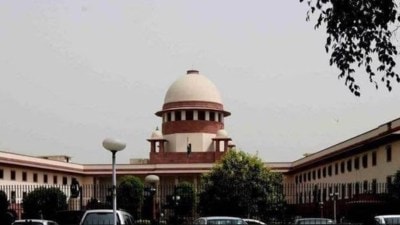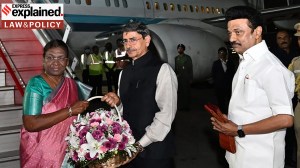Indian Railways as Railways Inc is budget’s new thrust
The price war in private airlines is being carefully watched at Rail Bhavan as officials work on Laloo Prasad Yadav’s third railway bud...

The price war in private airlines is being carefully watched at Rail Bhavan as officials work on Laloo Prasad Yadav’s third railway budget to be unveiled on February 24.
From a slumbering, rickety organisation to one that’s waking up to market realities, the Railways has reason to be satisfied: between April and December 2005, business from freight is up 18 per cent to Rs 26,055 crore, passenger earnings are up 8.25 and total earnings, at Rs 38,929 crore, stand 15.3 per cent higher.
“We will end the year with about 665 million tonnes of throughput,” says R R Jaruhar, member, Railway Board. “This 11 per cent growth is a major achievement—the highest-ever such increase in the history of Indian Railways.”
“We will end the year with a surplus of Rs 9,000 crore,” a Rail Bhavan official said. This budget, which hopes to push this figure up by 30 per cent to over Rs 12,000 crore by March 2007, will ride on three tracks:
Track 1: For a change, passenger fares in AC1 and AC2 categories will not rise. “An airline has been saying, ‘We’re not competing with Jet or Indian Airlines, but with Indian Railways.’ Now we’ll show them what competing with us means,” said the official. According to him, railways can’t compete with airlines on speed, but “they can’t compete with us on fares.” And unlike the Re 1 reduction in fares last year, which was quite simply, a populist move, this time’s fare restructuring will be done as part of a, “profound business strategy that will make commercial sense for railways.”
Track 2: Effectively, however, the two classes—AC1 and AC2—will see a fall in price. The upgradation scheme, introduced on January 26 in two Rajdhani trains, will be extended to 15 trains on February 6 and Rail Bhawan is trying to further extend it to all 1,500 trains before Budget 2007.
Under this scheme, a wait-listed passenger will be upgraded to the next higher class, if there are empty seats going. “A vacant seat is a lost seat,” says Lalu Prasad, as he oversees the finishing touches being given to his new house in Patna. Theoretically, therefore, a Rs 600 sleeper class ticket holder could travel in a Rs 3,800 AC1, implying a fall of more than 80 per cent. Add to that the proposed frequent traveller scheme and the load factor on passenger traffic, which is less than 70 per cent today, could rise. If it climbs to 90 per cent, the railways will make an additional Rs 2,000 crore per annum. Budget 2007 will seek about Rs 500 crore of additional revenues from upgradation.
Track 3: There will be no increase in freight rates. On the contrary, they will fall. But unlike in the previous regimes, when all rises or falls were ‘across the board’, this time they will be strategic, led by “market forces”. Already, for distances over 500 km carrying heavy loads, the railways is the cheapest mode of transportation. Reducing them further will give road transportation a further run for the money. “It could be Deccan, it could be Jet, it could be Sahara, it could be Indian Airlines,” says Minister Lalu Yadav.
“Mostly people who travel there don’t spend from their own pockets. There is a company, a government paying their bills. But the aam aadmi, who has to pay from his own pocket, he has to come to railways—how can these airlines compete with us?”
Photos




- 01
- 02
- 03
- 04
- 05



























